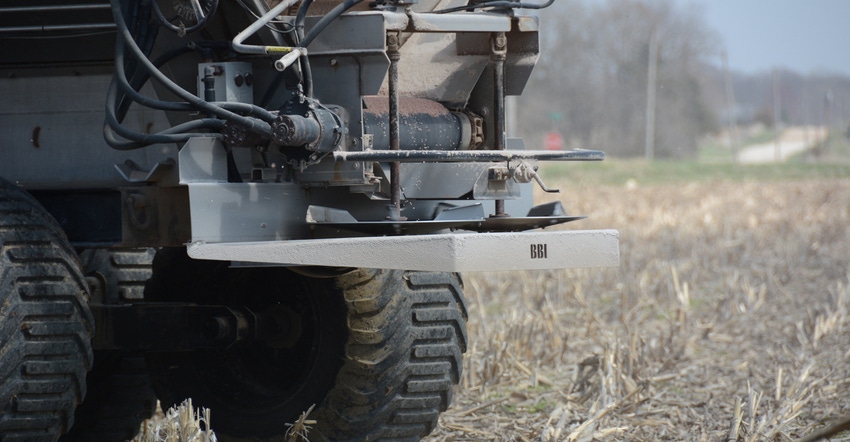
Variable-rate fertilizer application is almost a no-brainer as dealers have invested in precision technology. On average, Illinois commercial applicators are tacking on just $1.50 per acre for VR. This makes adoption more affordable, but there are other ways to boost return on investment.
Decatur, Ill., farmer Adam Brown has found that USDA will pay $17.30 per acre if he adopts VR under the Conservation Stewardship Program. To get the payment, he also uses yield mapping, soil testing and minimum soil disturbance during fertilizer placement.
He uses a variable rate for phosphorus, potash and lime. The $17.30 per acre comes close to covering the $20 per acre he spent this year on variably applied monoammonium phosphate (MAP), but that doesn’t include application and soil testing costs.
To boost his returns, Brown tweaked his approach to soil tests by sampling on a larger grid — 3 acres — and cut his cost to $4.89 per acre. That beats the longtime sampling norm of $6.30 per acre on a 2.5-acre grid.
“With samples, we can calculate how much P, K and lime needs added and where. This type of precision agriculture stretches our dollars further,” Brown says.
Some agronomists, such as Karen Corrigan of McGillicuddy Corrigan Agronomics, say they opt out of grid sampling, the most common soil sampling technique in Illinois. Instead, they target different zones in a field based on soil types, crop history and topography.
This results in fewer sample bags than grids, reducing laboratory fees. The University of Illinois also has a new study that demonstrates how more specific soil tests coupled with variable-rate P application can help reduce costs and P losses.
Zone sampling helps to identify the variable needs of a field, but Corrigan says, “the utility of variable-rate technology will depend on how variable the field is.”
VR, landowners and you
There are other factors that can impact VR use. When it comes to rent terms, some farmers must apply what grain removes. Corrigan says if farmers with these terms are straight-rating removal based on a whole field average, it would not pay to use variable rate.
“If you are VR by yield for each zone, however, it might pay,” Corrigan says. She notes it depends on how variable the zones are in a field.
“If a field is pretty flat and black and all one soil type, then it is less likely to pay. The more variable the field is, the more likely VR will pay, because you are putting nutrients where you need them,” she explains.
At today’s prices for diammonium phosphate (DAP), assuming a 225-bushel corn yield, it would cost $39.60 an acre to replace the phosphorus the corn used in grain production. For 70-bushel soybeans, it would cost $25.30. That’s without the added average expense of $1.50 per acre for variable application. But Corrigan says there’s a way to reduce variable-rate costs.
“I have one operation that VRs the first year to even the field up, then straight-spreads the next three,” she says.
Farmers who use variable-rate technology in Illinois are most likely to use it with lime, as Corrigan says that’s more likely to change between soil zones in the field, even in relatively flat areas. Brown says switching to variable rates has helped him draw down the volume he applies slightly. While he pays Nutrien back much of that savings with a higher-than-average application cost of $5 an acre, he says, “We’re taking a step in the right direction.”
About the Author(s)
You May Also Like




